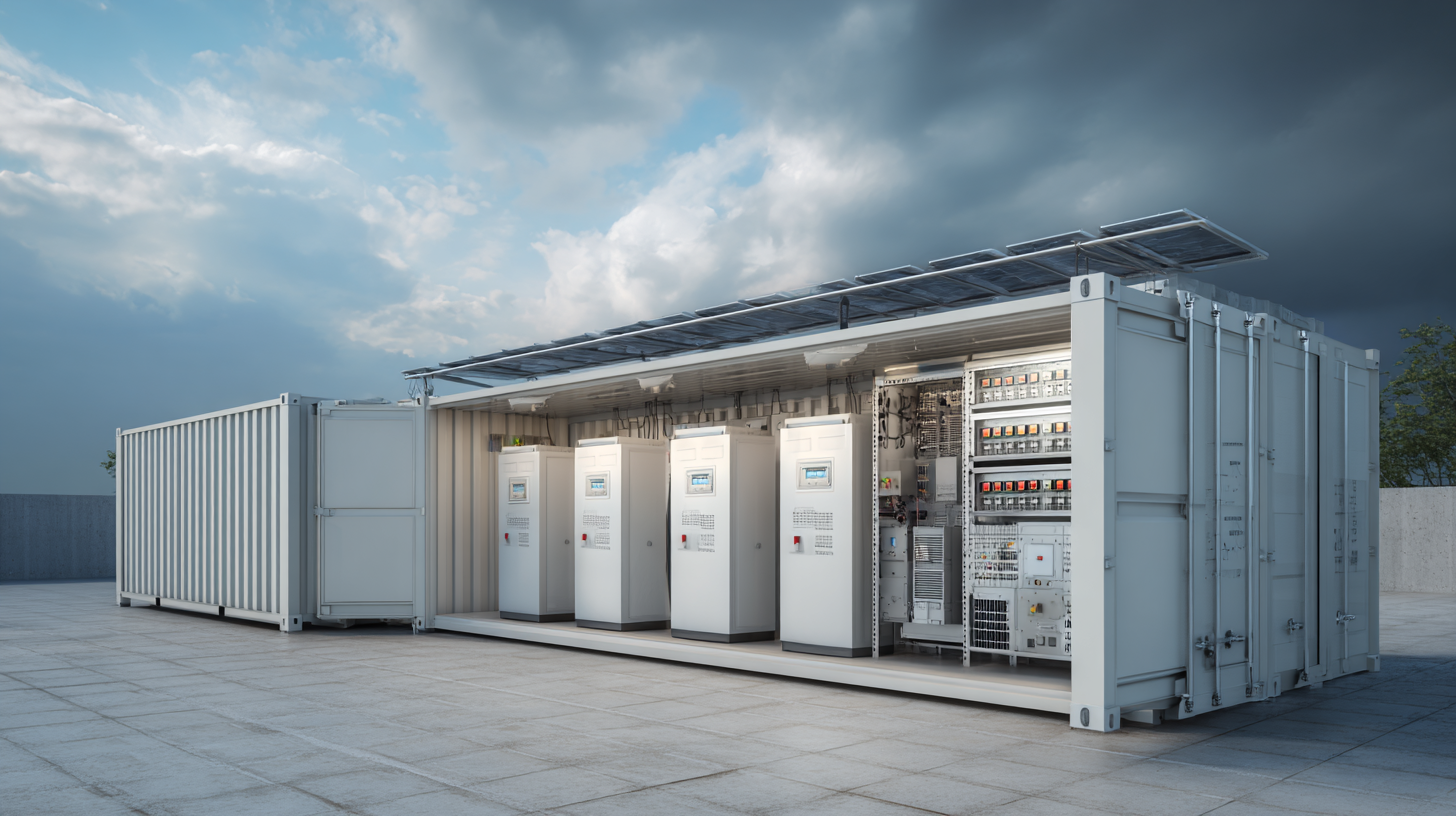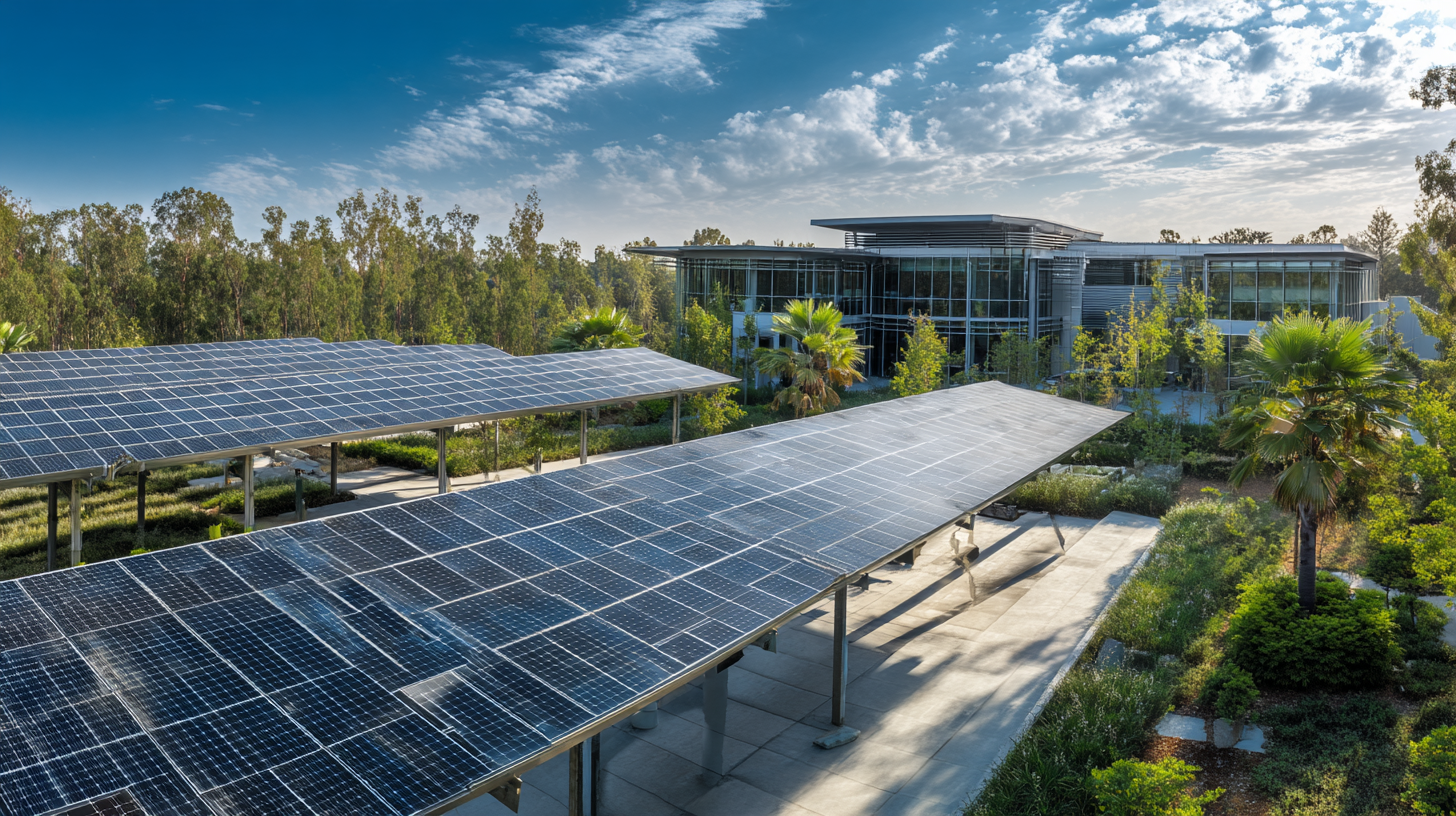Blog
- Home
- Blog
The Ultimate Guide to Maximizing Efficiency and ROI with Solar Power Storage Solutions
As the demand for renewable energy sources continues to surge, solar power storage solutions have emerged as a pivotal component in enhancing both efficiency and return on investment (ROI) in the solar industry. According to a report by the International Energy Agency (IEA), global solar energy capacity is projected to grow by 850 gigawatts (GW) by 2024, underscoring the necessity for effective storage to manage this influx. The potential of solar power storage lies in its ability to store excess energy produced during peak sunlight hours for use during low generation periods, thereby optimizing energy consumption. Additionally, a study from Wood Mackenzie forecasts that the solar storage market will exceed 12 gigawatt-hours in capacity by 2025, indicating a rapidly growing interest in these technologies. This guide will provide a comprehensive checklist for businesses and homeowners alike, aimed at maximizing efficiency and ROI through effective solar power storage solutions.

Understanding Solar Power Storage Solutions: Key Technologies Explained
Solar power storage solutions are becoming increasingly vital for maximizing the efficiency and return on investment (ROI) of renewable energy systems. At the heart of these solutions are key technologies designed to capture and store solar energy, ensuring that homeowners and businesses can utilize power even when the sun isn't shining. Among the leading technologies are lithium-ion batteries, which offer high energy density and efficiency. These batteries charge during peak sunlight hours and release energy as needed, significantly reducing reliance on the grid and lowering electricity costs.
Another important technology is flow batteries, which stand out for their ability to scale easily and provide long-duration energy storage. Unlike traditional batteries, flow batteries utilize liquid electrolytes that can be stored separately, making them a safe and flexible option for larger installations. Additionally, advancements in smart inverter technology allow for better integration of solar power systems with storage solutions, optimizing performance and efficiency. As these technologies continue to evolve, they play a crucial role in not only enhancing solar energy usage but also supporting the transition towards a more sustainable and resilient energy future.
The Impact of Solar Power Storage Solutions on Efficiency and ROI
This chart illustrates the correlation between different solar power storage technologies and their efficiency rates as well as return on investment (ROI) over a typical operational lifespan.
Assessing Your Energy Needs: A Guide to Choosing the Right Storage System
When assessing your energy needs for solar power storage solutions, it is crucial to evaluate your consumption patterns and potential savings. According to a report by the National Renewable Energy Laboratory (NREL), optimizing energy consumption can yield savings of up to 30% annually for households utilizing solar energy. Begin by analyzing your daily energy usage, the peak times when energy demand is highest, and identify which appliances consume the most power. This understanding will guide you in selecting the appropriate storage capacity that aligns with your lifestyle and energy requirements.

Selecting the right storage system involves not only understanding your energy needs but also evaluating the various technologies available. Lithium-ion batteries dominate the market, offering a cycle life of up to 5,000 cycles, which is significantly higher than lead-acid alternatives. A study by BloombergNEF suggests that lithium-ion battery prices have decreased by more than 85% since 2010, making them more accessible. When choosing a system, consider factors such as round-trip efficiency, warranty periods, and scalability to ensure that your investment maximizes both efficiency and return on investment (ROI). Making informed decisions based on industry data can transform your solar energy system from a passive installation into an active participant in meeting your energy needs.
Maximizing ROI: Financial Incentives & Rebates for Solar Storage Investments
Investing in solar power storage solutions is not only a step toward sustainability but also a savvy financial move, given the myriad of incentives available. Homeowners can maximize their return on investment (ROI) by taking advantage of federal tax credits and local rebates. For instance, many states offer substantial financial incentives, particularly for solar and battery storage installations. In Florida, for example, the solar-friendly policies allow homeowners to significantly reduce their energy costs. It's crucial to keep an eye on the upcoming changes in residential solar technology credits, such as the expected reductions in STCs by 2025, to plan your investments effectively.
Tips: When evaluating solar storage options, use a solar and battery calculator to estimate your potential savings. This tool helps identify the best configurations for your home, ensuring you optimize both efficiency and financial returns. Additionally, research state-specific incentives, as these can dramatically affect overall savings, providing substantial rebates that enhance the financial feasibility of your solar investment. Engaging with local energy providers can also unveil exclusive offers that complement federal incentives, amplifying your ROI.
Optimizing Efficiency: Best Practices for Managing Solar Power Storage
Managing solar power storage effectively is crucial for optimizing efficiency and enhancing return on investment (ROI). One of the best practices is to strategically size your battery storage system based on consumption patterns and solar generation. By analyzing usage data, homeowners and businesses can determine the optimal capacity of storage needed to meet their energy demands while minimizing excess energy waste. Implementing smart monitoring systems allows users to track energy production and consumption in real-time, facilitating informed decisions about when to store or use energy.
Another key practice involves leveraging time-of-use rates. Many utility providers offer lower rates during off-peak hours, so strategically charging your storage system during these times and using stored energy during peak demand can result in significant cost savings. Additionally, integrating advanced energy management systems can further enhance efficiency by automating the storage processes. These systems can adjust storage levels based on forecasted solar production, electricity prices, and consumption trends, ensuring that every kilowatt-hour generated is used to its fullest potential while maximizing the overall ROI of solar power investments.
Future Trends: Innovations in Solar Storage Technology to Watch Out For
The evolving landscape of solar storage technology presents significant opportunities for maximizing efficiency and return on investment (ROI) in renewable energy systems. As the market for solar energy storage continues to expand, innovative solutions are emerging to meet the growing demand. The solar refrigerator market alone is estimated to reach $10.15 billion in 2023, with a compound annual growth rate (CAGR) of 7.42% from 2024 to 2031. This surge reflects not only advancements in technology but also an increasing consumer awareness of the benefits of solar energy.
Recent global gatherings, such as an international photovoltaic summit and an extensive cooperation conference, highlight the collaborative efforts within the industry to explore trends and innovations in solar storage. Key discussions focus on breakthrough technologies that can enhance energy efficiency and storage capabilities, making solar power a more viable solution for both commercial and residential applications. These innovations, driven by industry leaders and experts, are crucial in shaping the future of sustainable energy and ensuring that investments in solar storage yield optimal returns. As this sector continues to develop, stakeholders must stay informed about emerging technologies that can redefine energy consumption and storage practices.
